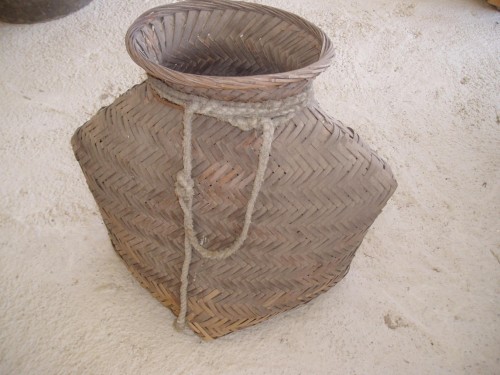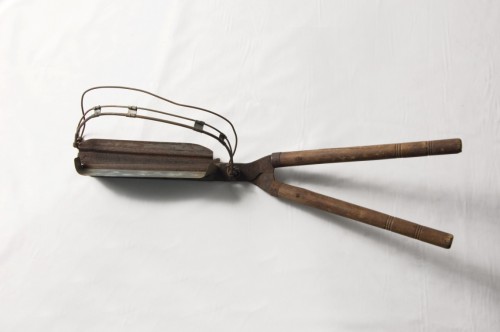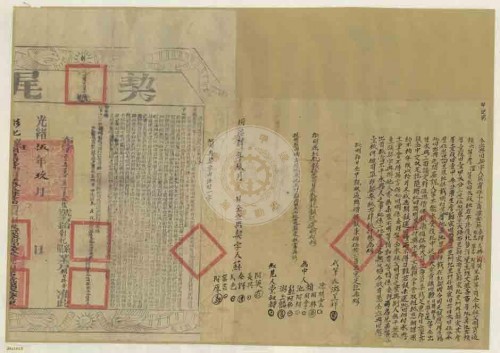TELDAP Collections
| John Dodd, Li Chunsheng, and the Age of Taiwanese Tea |
|
John Dodd, a Scot born in the time of European exploration, travelled to Taiwan for his own overseas adventures. Li Chunsheng, born and raised in Xiamen, also sailed to Taiwan after the economy of his hometown was destroyed by the Taiping Rebellion, hoping to rebuild a successful career. It was these two men who made Taiwanese tea known world-wide, and brought unprecedented prosperity to Dadaocheng. Their success has won them the title: "Fathers of Taiwanese Tea".
Two Men from Afar
John Dodd arrived in Hong Kong in 1859 and made his first visit to Taiwan in 1860. In 1864, he landed on this island again and did not leave until thirty years later. Inspired by the study of natural history, Dodd took great interest in the business potentials of natural resources in Taiwan, such as camphor, tea, petroleum, coal among others, and made extensive anthropological observations. His publications include Introduction to the Customs of Indigenous Tribes in the Mountains in Northern Formosa and a Personal View on the Possible Origin of Formosan Indigenous Peoples.
Dodd was a hospitable and easy-going person. Once he had to rely on poles to walk around on due to leg injury and therefore got the nickname of "Three-legged Lad". When George Leslie Mackay came to Northern Taiwan for his Christian mission for the first time, Dodd offered him a place to stay on the first night. However, Mackay had to sleep in Dodd's bathroom because Dodd was also housing crew members from a shipwrecked boat on the same night. During the Sino-French War, Dodd became a correspondent for Hong Kong's Daily Press and supplied the news agency a witty and humorous chronicle of the French blockade of Taiwan during the war.
 Mackay's diary: "I'll never forget John Dodd's hospitality".
(Source: Department of Religion Culture and Organization Management, Aletheia University)
Li Chunsheng was born in Xiamen to a father who worked as a boatman. At the age of fifteen, Li followed in his father's footsteps and was baptized at a Baptist church. This was also where he acquired high proficiency in foreign languages despite the lack of formal education due to his family’s poor finances. As Li grew up, he taught himself Chinese classics and quickly showed a talent in striking business deals. Therefore, he soon became a reputable comprador and a native manager for a European business quarters of Xiamen. Li also had a passion for national and religious affairs. For instance, after the Mudan Incident in 1874, Li published seven articles titled Public Affairs in Taiwan, in which he analyzed the Qing government's strategic plan for Taiwan. Li also published a number of books on contemporary affairs, philosophy, and Christian principles, and funded the constructions of several churches in northern Taiwan.
 Dadaocheng Church was erected in 1915 under the sole funding from Li Chunsheng. The architectural style is very similar to that of churches in Li's hometown of Xiamen.
(Source: Department of Religion Culture and Organization Management, Aletheia University)
Taiwanese Tea Leaves Sell like Hotcakes
In 1865, Li was referred by Elles, the owner of the British Elles & Co. company, to work as a comprador of John Dodd in Taiwan. During an earlier survey of camphor productions in Taiwan, Dodd had discovered some indigenous tea species, and had also observed the conditions of tea plantations in Quanshan and Haishan. He concluded from these observations that the weather and soils in Taiwan are eminently suitable for growing tea trees. The quality of the existing plants was also very good. Therefore, Dodd believed that there was a great potential for Taiwan tea production. It just so happened that Li had had experience in tea trading back in Xiamen and was quite familiar with the development of the tea industry in Fujian province. As a result, Dodd and Li decided to promote tea growing in Northern Taiwan.
At that time, there was no large-scale tea production in Taiwan. Tea was usually homegrown and very crudely processed for individual consumption. In Muzha, where Dodd planned to develop large-scale tea plantations, most people grew True indigo, which was high in economic value and made good money for the farmers. Therefore, a great amount of efforts had to be put in to persuade farmers to change to cultivating tea. Dodd started with buying the crudely processed tea from the farmers to be shipped to Xiamen for fine processing. Next, he issued loans to farmers who were willing to buy his imported tea seedlings from Anxi, a famous tee production county in Fujian province. With Li providing tea growing advice and Dodd promising to buy all of the tea harvested from farmers who source seedlings from them, more and more people were willing to take a chance and invest in this new rising industry.
To improve the quality of tea leaves, Dodd invested in tea processing equipment and recruited experienced tea processing experts and apprentices to supervise the production in Taiwan. Taiwanese tea leaves now were no longer the crude products that could only be exported to Xiamen, but they are of fine quality Choicest Formosa Oolong tea that well-known all over the world. When the Suez Canal was opened to shipping in1869, Dodd and Li hired two large sail boats to export 2,131 dan (or 129,000 kg) of oolong tea to New York, where the stock became an instant success. As a result, the price of Taiwanese tea doubled within one year's time, from $15 per dan to $30 a dan. Dodd and Li's practice of direct export of tea leaves was evolutionary in Taiwan, as it was customary in the Qing dynasty for outgoing Taiwanese tea to be shipped to Xiamen first before being sold to other territories (Davidson 1972, p.259).
A bamboo basket for carrying freshly plucked tea leaves. The picker would carry one such basket on the waist when plucking tea leaves. The basket has a wide opening so that it is easier for the picker to toss plucked leaves in it.
(Source: Hakka Affairs Council, Executive Yuan)
Tea leaves used to be hand-picked exclusively to ensure quality. In recent years, the need for bulk production pushed many tea growers to use specialty scissors to pluck tea leaves. These scissors come with leave-collecting designs and are unique tools for tea growers.
(Source: Hakka Affairs Council, Executive Yuan)
The Merry Leaves of Dadaocheng
The success of Dodd and Li attracted the attention of other international traders. Starting in1870, as many as five major western trading companies established branch offices in Tamsui and Dadaocheng. As a result, Dadaocheng, which was once a small village populated by few Tong'an people, quickly became a major hub of commerce and shipping. Cultural and religious activities in that area also quickly diversified and multiplied, making Dadaocheng one of the busiest cities in Northern Taiwan of the time. Local and overseas merchants alike started to invest in the tea industry, resulting in an explosion of tea plantations. Tea bushes could be found everywhere on the hills around the Dadaocheng area, places that are now known as Nangang, Shenkeng, and the banks of Xindian River, and only stopped at the border of aboriginal areas.
The percentage of tea in Taiwan's total export also saw a sharp rise from 7% in 1868 to over 50% in a matter of ten years. The enormous export volume led to an increase of labor demanded in the tea industry. Loads and loads of female laborers were hired to harvest trees and pick out tea stalks in tea processing plants in Dadaocheng. Since women at that time were usually confined to domestic duties, the opportunity of taking on work outside the house and even making money was incredibly valuable. Tea harvest season became almost like a grand social occasion for these tea plucking women, who went the extra mile to dress themselves for work. They would sit under the exterior arcades of buildings in Dadaocheng, picking stalks out of processed tea while enjoying lively conversations with each other. This is why people at that time called the tea leaves "merry leaves".
The cylindrical basket used to bake tea leaves. The basket has a wider opening on the top while a smaller one at the bottom. A thin layer of silk separates the inner compartment in half. When baking, tea leaves are placed on top of the silk layer so that they are not in too close contact with the heat source and thus won't be overheated.
(Source: Hakka Affairs Council, Executive Yuan)
Tea-panning spatulas, also called tea-knifes or wooden palms, are used to stir tea leaves during panning, or baking, to accelerate the fermentation process.
(Source: Hakka Affairs Council, Executive Yuan)
A Bumpy Ride All Along: House rentals
As rosy as it may sound, Dodd and Li's success did not come easily. When Dodd first decided to develop fine tea processing in Taiwan, he had to overcome many difficulties to make his dream come true. The Institute of Modern History of Academia Sinica has conducted in-depth research on the historical documents left by the then Zhongli Yamen (the government body in charge of foreign affairs in Qing dynasty). The research shows that "According to the Treaty of Tianjin, foreigners were allowed to rent and buy properties for the establishment of branch offices in Huwei and Keelung Harbor, which were officially-designated trading ports in Taiwan. However, foreigners could not set up branch offices at non-designated trading ports and could only rent houses from local residents for stocking. It was later decided that foreigners could also rent houses from local residents in Mengjia to manage trading affairs. As far as Dadaocheng was concerned, it was not a designated trading port, and thus foreign trading companies could not establish branch offices there."1 This explains why Dodd had little choice but to base his operations in Mengjia when he opened Dodd & Co. To circumvent the regulations on foreigners' leasing and buying properties, Dodd asked Li to rent and buy properties for Dodd & Co. However, the locals at that time were not very friendly to westerners. There were also many incidences of physical confrontation between the locals and foreigners. Therefore, Li certainly did not have an easy time working with the locals on behalf of a foreign boss.
A property sales or lease contract in the Qing dynasty usually consisted of two parts: Qi-tou (the terms of the contract) and Qi-wei (official seals certifying that all tax duties have been fulfilled). A complete contract must include these two parts and tally impressions.
(Source: Graduate Institute of History and Historical Relics, Feng Chia University)
In the 4th volume of Creative Comic Collection, the author described how Dodd wittily overcame the obstacles in renting houses in Mengjia. However, he also infuriated the three largest local families in the process. The tension between the two parties led to more daunting challenges for Dodd and Li, and finally accumulated into a violent incident which even involved the British and American government. For more details on what happened after Dodd and Li settled in Mengjia, please refer to the article: The Violent Confrontations a Hundred Years Ago.
Endnote:
1. Zhuang Shuhua (1996). Introduction to Historical Documents of Post-war Taiwan Archived in The Institute of Modern History of Academia Sinica: Taiwan's International Relations in the Qing dynasty as Revealed in Zhongli Yamen's Records. Newsletter for Modern Chinese History, vol.22, pp. 106-123.
References:
Chen Zhengshan, Wei Yinbing (text), Cai Lingyu et al.(photography) (2008). Foreigner in Formorsa: The Glory of John Dodd. Dacombook Publisher
Lin Manhong (1978). Tea, Sugar, and the Camphor Industry in Late Qing Taiwan. Taiwan: The Research Unit of Taiwan Bank.
James W. Davidson (1972). The Island of Formosa Past and Present (Cai Qi-heng trans.). Taiwan: The Research Unit of Taiwan Bank. (Original work published 1903).
John Dodd (2007). Journal of a Blockaded Resident in North Formosa during the Franco-Chinese War, 1884-5 (Jackson Tan trans.). Taiwan: The Study of Taiwan Publishing. (Original work published 1888).
|

















